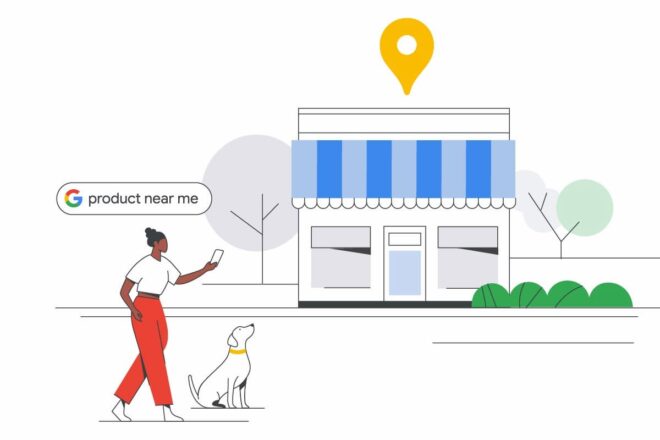You need e-commerce more than ever. Here’s how to do it right.
Editorial Team
9 min read
Small merchants are facing an unprecedented financial crisis caused by the novel coronavirus. One investment firm estimated that total foot traffic to US retailers was down 97.6% for the week through March 27 as compared to 2019. The lockdowns are expected to continue over the next 6 to 12 months; as a result, many merchants are focusing on their online stores to continue serving customers stuck at home. If you’re new to e-commerce, we suggest starting with this post on how to take your business online quickly.
It’s one thing to create an e-commerce site. Creating a dynamic, elegant, and inviting online presence is quite another. Once you’re up and selling online, how can you make that the best and most profitable experience possible? This brief guide offers tips and advice to help you adapt your business model and put e-commerce front-and-center.
Logistics and delivery
If you’re new to e-commerce, you may be learning the ins and outs of order fulfillment on the fly. Not only will you face the challenge of establishing a delivery operation, you’ll be doing so in extenuating circumstances: customers now expect to see policies and processes in place that prevent the spread of coronavirus through safe shipping and handling. Here are some things to think about as you set up your ordering and delivery operation.
Use safe packing practices. The WHO and CDC have not found any cases of transmission via packages. That being said, customers appreciate any extra effort you can take to be extra cautious. If you or your employees are packing products for shipment, wear face masks and gloves. It’s also helpful to post publicly on your website and social media accounts the steps you’re taking to make each shipment as safe as possible.
Update your returns policy. Lockdowns are preventing customers from visiting and handling your product in-person before they buy from you. “This shift will mean more returns, due to the limitations of shopping online and the way people shop, which often involves ‘bracketing,’ or buy to try, buying multiples of size, color … with the intention of keeping their favorite and returning the rest,” Happy Returns CEO David Sobie told CNBC.
You may want to update your returns policy to account for an increased number of returns. Increased returns can drive up your costs, waste packaging, and increase the health risk to delivery drivers and your employees. On the other hand, customers will remember generous policies during difficult times, which may translate into greater loyalty. Some retailers are lengthening their return window to allow shoppers more time to get to the post office or to visit the store once you are able to re-open. Try to find a balance between being generous to homebound customers while factoring in your ROI and labor costs.
Set up order fulfillment and labor. It may make sense to partner with a fulfillment center to help manage your shipping and delivery. Fulfillment centers bring expertise, larger space for storing inventory, and quicker delivery times. Whiplash, Fulfillify, and ShipBob are all e-commerce fulfillment centers worth exploring.
Understandably, fulfillment partners are usually more expensive than shipping and packing products yourself. If your volume of e-commerce orders is manageable, you might do just fine with having your staff fulfill them. Or, take inspiration from New York City—where the local government offered delivery jobs to out-of-work freelancers—and see if there’s an opportunity to support other businesses in your community.
One note on fulfillment: because nothing is easy in a pandemic, there are particular challenges to doing fulfillment safely. Distancing requirements, logistics of delivering packing supplies to your team members, and inventory management are all a little more complicated during this time. The Clover App Market contains a wealth of apps you may find helpful in keeping your logistics organized. Try apps like Better Delivery, Drop Ship Manager, and Address Labels to get started.
Calculate your shipping costs. You will also need to factor in costs for packaging and delivery and decide which delivery carrier to use. Some carriers are offering free packaging during this time. Many are also offering scheduled pickups from your location. You can review the policies of the main carriers here:
You can always get a printer and labels that will work for your packaging and shipping process. If you want to streamline that process, however, there are a few tools that can help you. Check out ShipStation as an option to automate the shipping cost calculation and label printing process. Aftership is another popular free tracking solution worth looking into.
Make sure to communicate with your customers as your delivery operation evolves. Manage expectations around shipping delays and arrival times. Consider encouraging customers to purchase more than your average ticket value by offering free shipping for orders above that threshold.
Marketing your online store
As lockdowns continue, you may need to broaden your focus from meeting the needs of your existing customers to include growing new e-commerce sales. If you’re just starting to market your e-commerce site, experts recommend spending time on two things: identifying your audience and positioning your product.
“The more you know about your audience, the easier it becomes for you to create compelling marketing materials,” says The Blueprint, a publication by The Motley Fool. “This is why creating a buyer persona is an important step before you even start marketing your products. With it, you have a solid grasp of who your audiences are and what makes them tick.” Once you have identified a buyer persona, you can learn more about how to best position your product online. How can you talk about your product on social media, on your website, and in online ads in a way that appeals to your target customer?
If there’s a silver lining in this lockdown, it’s that there’s a newly captive audience on the internet. People are shopping from home for many more items than ever before. There’s an opportunity to grow sales through your e-commerce site—and here are some ways to get started.
Make it easy to find your e-commerce shop. If you’re adding e-commerce to your existing website, as Tin Pot did, have you made your new channel prominent and easy to find from your homepage? Are you linking to it from your social media channels, in your email newsletter, and on sites like Yelp, Google Business, and Pointy? Signal from as many places as possible that you’re still open for online business.
Optimize your site for higher traffic. If your site feels clunky and hard to navigate, it’s unlikely that you’ll be able to maintain sales during this time. It’s important to make sure that customers can find your site, and also that it’s organized and easy to navigate. Search engine optimization can certainly get complicated, but there are simple changes you can make to help your store appear in more relevant online searches. Check out our quick and dirty SEO guide for more details. As for site navigation, think carefully about the user experience, organize your stock listings in an intuitive way, and consult with your friends, families, staff, and customers for more perspectives on how to streamline your e-commerce site.
Include high-quality images. As you work to optimize your site, we recommend that you use excellent product images. Professional photography across your site can make a huge difference in the shopper experience. For a little inspiration, check out Tin Pot Creamery’s beautiful online store. The images shown on your site should not only be enticing, but they should be consistent with your overall store design. If your shop is stark and industrial, use dramatic lighting; If your aesthetic is more approachable, make sure the lighting is warm and inviting.
Get creative with your content. With less or non-existent foot traffic, how can you keep your employees busy? Some retailers have started offering curated subscription boxes with customer favorites and complementary products that they’re hoping will become more popular. Create a video preview of what’s going into each subscription box on your social pages, and have your team get creative with your content. Skincare brand Glossier, for example, launched Glossier Live Edit, a video chat program where Glossier team members hosted 1:1 chats with customers about skincare, beauty routines, and products.
Customer loyalty and sustaining your business
Your e-commerce site is now your primary tool for selling to existing customers. And, since existing customers are the core of any business, how can you make sure they’re still being served by your e-commerce site?
Encourage repeat purchases with subscriptions. If your customer is likely to buy your product on a repeat basis, make automatic reorders easy. Give a small discount for subscribing to regular refills, and ideally let the customer set their preferred refill cadence.
Lower shopping cart abandonment (the “almost sale”). The average global rate of cart abandonment—when customers add items to their online cart but never click purchase—is just over 75%. That’s a huge missed opportunity for many retailers.
Some simple changes to the shopping and checkout process can help you lower cart abandonment rates. Create urgency by showing stock availability: when an item is running low, a casual browser may become a buyer much faster. Set up an automatic email that is triggered when a customer leaves something in their cart—Mailchimp provides an easy way to do this. One report found that of the 45% of “cart abandoned” emails that are opened, 50% of them receive click-throughs, and 50% of those click-throughs result in completed purchases.
Other tactics for smarter e-commerce
There are many ways to encourage customers to shop at your e-commerce site. Some retailers offer a free gift with purchases over a certain amount. Whether or not you’re able to give discounts during this time is unique to each retailer; we know times are tough, and so do customers.
Another great way to build customer loyalty is to motivate customer account creation with a loyalty program that encourages repeat buying. Give a small discount off a customer’s first order if they create an account. Alternately, you could offer a first-time-buyer discount code in a pop-up that invites new visitors to sign up for your email list. Everyone wins: you get a customer’s email (and hopefully, a first purchase) while the customer gets a discount.
For more information, check out our coverage of financial relief, business preparedness, and our general merchant resources.
Related Posts
ServicePro 911–The ultimate management tool for service companies
Omnichannel shoppers are a big opportunity for local retail
Popular Topics
Stay in touch
Sign up and learn more about Clover.
Thank you for your subscription!
More posts about starting a small business
eBook





